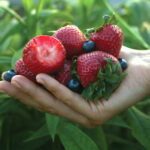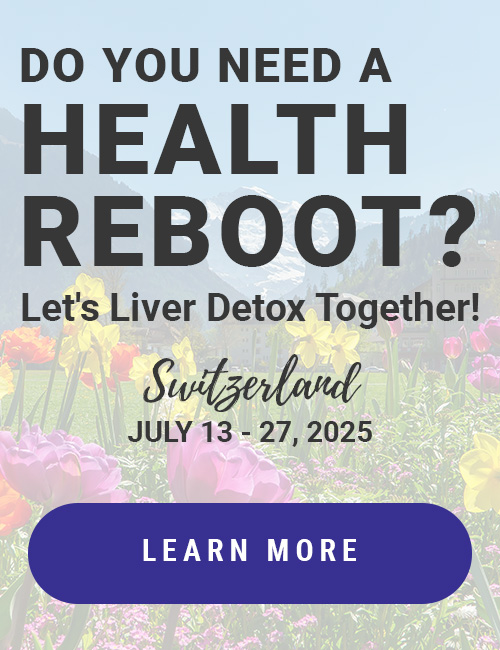What is Good Nutrition?
What Should My Nutrition Be Like To Be Healthy?
Nutrition is such a confusing topic! People are confused about what to eat, more than almost any other topic. It’s not your fault! You’ve been brainwashed seventeen ways from Sunday, by a variety of “food cults” with a profit motive. Low fat, low carb, what’s next? I predict a low-protein obsession.
First let me make some comments about what trends say nutrition is that is patently FALSE according to my research and experimentation over 18 years:
Some people (especially fitness buffs) say that it’s about protein, and they eat meat/dairy products and protein powders, bars, and many other products using whey and soy protein.
For information on why you should avoid whey, read the report on the most comprehensive nutrition study in history: The China Study by T. Colin Campbell, PhD. And if you want to build muscle mass that lasts by means that don’t jeopardize your health, read Raw Power! Building Strength & Muscle Naturally by 15-year vegan, raw foodist bodybuilder Stephen Arlin. If 300-pound bodybuilders can eat only plants, it must not be necessary to eat animals to achieve that. It’s easier, but not necessary or better.
It’s not about protein, and one of the worst things you can do is to eat a lot of meat. (Especially nitrate- and nitrite-added processed meats.) Keep your consumption of animal products less than 5 percent of your diet (see The China Study on how this dramatically lowers your risk of cancer, heart disease, and autoimmune disease).
I believe the Atkins Diet is possibly the worst nutritional plan ever invented. Dr. Atkins’ own poor health and manner of demise (heart disease!) is just one piece of evidence that his legacy is one of high disease risk, not vibrant, energetic living. The extraordinarily long human gastrointestinal tract is not built for high animal protein consumption. Not to mention that Atkins caused tens of thousands of people to live higher on the food chain than we need to: we consume far fewer of the earth’s resources when we eat plant food. After all, it takes 20 lbs. of plants to build 1 lb. of animal flesh for human consumption.
And whey is a high-margin food—it’s trash, practically free to make, so you can buy it for $1 and sell it for $30. Of course many companies want to sell it to you as a “health food.” But sadly, the fact is that whey protein is cheap junk. It goes through 12 to 14 refining processes before it is preserved as “food” to add to your smoothies or water. And most of it is full of antibiotic, steroids, and hormones.
Don’t eat soy. It’s just not good for you, not the way Americans have processed it and put it in just about everything. The Japanese eat FERMENTED soy products like tofu, tempeh, and miso: eat those, non-GMO only, if you must eat soy. (Almost all the soy grown in the U.S. is genetically modified. If it’s labeled non-GMO, it’s also organic.)
But before you buy any more products featuring “soy protein isolate” or other processed soy foods, read this short digest by Kaayla T. Daniel, PhD of the massive tomes of research on soy.
People say nutrition’s about “low fat.” Nothing could be further from the truth, and I’m still overcoming in my own attitude the destructive psychology that a decade of national obsession with fat created.
Avocados, nuts, olive oil, coconut oil, grapeseed, flax and flax oil, and salmon oil are among the very best ways to get good fats in your diet for healthy cells, as well as healthy hair and nails. We eat these fats every day in salad dressings, green smoothies, and treats.
Fake and processed/refined fats are possibly the worst things you can eat: margarine, canola and other refined vegetable oils, etc., damage every cell they come into contact with. Read Sally Fallon’s chapter on fats in Nourishing Traditions for the best information on that topic I’ve encountered. (Caveat: the book has a lot of great information, but ignore her love of meat and dairy and look to The China Study
on that topic instead.)
My recipes often use whole coconut, and coconut oil, the only fat that does not turn to dangerous trans fatty acids when cooked. Studies show it does not turn rancid even after a year at room temperature. Unsaturated oils can become rancid and therefore highly carcinogenic immediately after being treated with high heat, and most are already refined when they arrive on the shelf in a bottle. And the positive health effects of eating coconut oil daily, including weight loss, are dramatic and well documented in The Coconut Oil Miracle. It is antibacterial, antimicrobial, antifungal, causes no arterial plaque. See the summarized research of Dr. Ray Peat HERE. And for the best price I could find anywhere for virgin, unrefined, organic coconut oil, go here.
SO WHAT SHOULD I EAT, you ask?
Good nutrition is a plant-based diet with minimal animal protein, 10+ fruits and vegetables every day (as much raw as possible-try for 60-80%) including lots of leafy greens, 8 glasses of water between meals (not with meals to dilute gastric juices), and small amounts of good fats like flax, coconut, and olive oil. Eat freely of whole grains (organic, non-gluten) and legumes. Eat small amounts of nuts and seeds daily.
Quit worrying about protein, and minimize animal products to 5 percent or less of your diet. Eat tons of greens—broccoli and spinach are more than 40 percent protein—and your body will manufacture the protein you need.
Eat as much of your food raw and organic as possible. Learn to make green smoothies, drink a quart of it a day, and make a big green salad the focal point of your dinner (rather than a little side dish). Learn to use only whole grains, seeds, and nuts (consider making my granola to cover all those things for breakfast), and my yeast-free sourdough bread. All of that in the 12 Steps course.
Finally, learn to make cultured foods like yogurt–or even better, kefir—as well as sauerkraut and other vegetables as taught in Step 8 of my 12 Steps to Whole Foods.
Eating homemade cultured foods every day will dramatically aid your digestion of cooked foods and colonize your gastrointestinal tract with good organisms.I suggest that you don’t make nutrition harder than it needs to be. I’ve looked closely at all-raw and all-alkaline diets, food combining, blood typing, Paleo, and many other extreme diets.
Though raw and alkaline foods are the best foods and feature prominently in my family’s diet, extremism in general creates bewilderment in a population that is already confused. People who are overwhelmed quit trying to eat right because it seems too hard.
Frankly, the most simple, true dietary advice I’ve ever encountered is found in the Doctrine & Covenants, Section 89, of the Latter-day Saints’ (Mormons’) scripture. It’s wise counsel given to Joseph Smith WAY ahead of its time—counsel that Colin Campbell and hundreds of others have proven with research hundreds of years later. Eat meat sparingly, in times of winter and famine. Eat abundantly of fruit, herbs, and grains. Avoid alcohol and tobacco. It’s not rocket science, just common sense now widely accepted.













